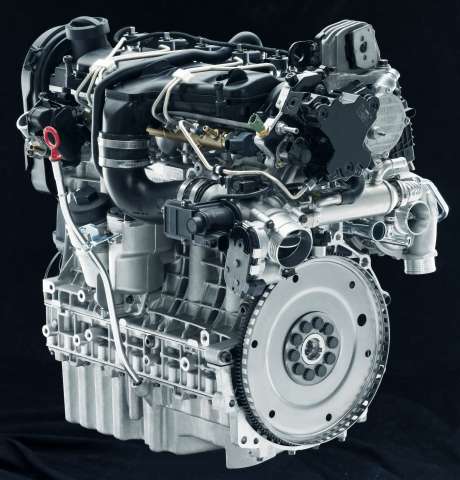 Volvo Reveals New Generation, |
 Volvo Reveals New Generation, |
 |
|
12th May, 2005
A better performing, more refined new-generation turbocharged diesel engine powers Volvo Cars large-car model range for 2006. Volvo will offer the new 2.5-litre five-cylinder engine in its S60, V70, XC70 and XC90. Amongst impressive gains in NVH refinement, the new engine's headline features are a sharp reduction in tailpipe emissions, a 16kW increase in peak power and a substantial 60Nm improvement in peak torque. Rated at 136kW and 400Nm, Volvo's new diesel engine is characterised by rapid throttle response at low and high rpm. “We have improved nearly everything in the engine,” says Jörgen Svensson, chief programme engineer. “The driver will perceive it as a lively petrol engine, only more powerful and more environmentally efficient.” Delivering improved power and torque across a wider rev range, the D5 diesel five-cylinder engine provides excellent high-speed performance with fast acceleration and efficient pulling power, even when driving up long, steep hills, with no need to change down. This more muscular diesel engine will be available in Europe and other selected markets; however, hot climate markets such as Australia are yet to confirm availability. Advanced water-cooled turbocharger Most of the air and exhaust channels have been given increased volume and more gentle bends for more efficient gas flow. The new-generation turbocharger has electronic control, resulting in fast and precise management of the charge pressure. A larger compressor wheel provides higher torque and output. Furthermore, the variable vanes have been cambered for more efficient gas flow at all settings, resulting in increased turbo efficiency. The improvements result in faster acceleration and better overall performance at higher engine speeds. The turbocharger's centre housing is now water-cooled, which is unusual in diesel engines. Water cooling was required because of the engine's much higher outputs, and because water cooling continues to provide temperature control of the turbocharger's centre housing well after the engine has been switched off. This is particularly beneficial during short stops after high-speed driving, such as when refuelling. Refined injection technology “We have also made the combustion chambers larger, thereby lowering compression,” says Svensson. "By doing so, we have gained two things: higher performance and lower emissions.” The injection system employs new injectors with seven finer nozzle openings as opposed to five in the previous engine's injectors. This results in better, finer atomisation of the fuel mixture and more efficient combustion. Fuel injection takes place in three phases: pre-injection, primary injection and post-injection. The last step is new and contributes to cleaner combustion and to regeneration of the particulate filter. A completely new, electronically regulated quick glow system results in considerably reduced glow times, also making it easier to start the engine in cold weather. New management system contributes to reduced emissions “We also have a completely new EGR cooler,” says Svensson. “This lowers the combustion temperature very efficiently, thereby reducing emissions.” The catalytic converter is positioned nearer to the engine, not just on manual but also on automatic versions, to promote faster warming and thus faster start-up of the exhaust cleaning process. The catalytic converter is also larger than before. In addition it has been supplemented with an oxygen sensor that precisely regulates the fuel mixture and emissions. Particulate filter is standard The filter is a CDPF – Coated Diesel Particulate Filter – in which a special coating helps burn the particulates. Therefore, no additives are needed, and the filter requires no maintenance. Burning away soot particulates takes approximately 20 minutes and occurs automatically at 500 to 1000km intervals, depending on driving conditions. In addition to the technical changes, the diesel engines’ service interval has been extended from 20,000km to 30,000km. Six-speed manual and automatic gearboxes Furthermore, a new automatic gearbox will be introduced during the course of the year. It also has six speeds and is available as an option. The new automatic transmission contributes to very fast response, particularly when the kick-down function is used. It also has a lock-up feature that is allowed to slip over a wide range of engine speeds for effective pulling power and good drivability, particularly when transporting heavy loads or towing. All-wheel drive with Instant Traction “The D5 engine with a six-speed gearbox and all-wheel drive is a nearly unbeatable combination,” claims Svensson. “It offers enormous driving pleasure while also providing power and low-rpm response for the most demanding uses.” Summary For increased performance
For lower emissions
|
